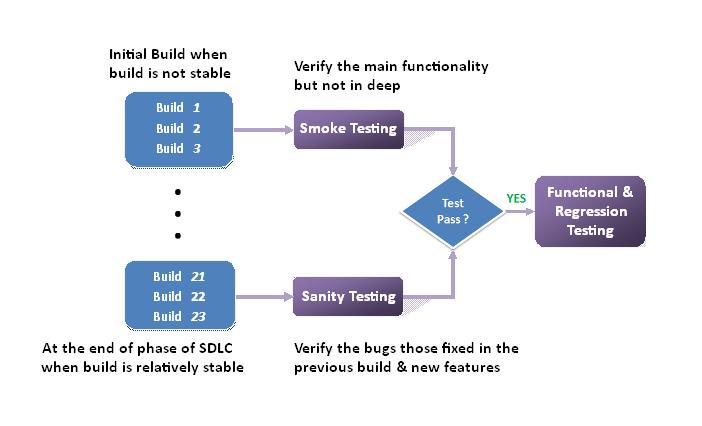What is Smoke Testing?
Smoke testing is the initial testing process exercised to check whether the software under test is ready/stable for further testing.
The term ‘Smoke Testing‘ comes from the hardware testing, in the hardware testing initial pass is done to check if it did not catch the fire or smoke in the initial switch on.
Prior to start Smoke testing few test cases need to created once to use for smoke testing. These test cases are executed prior to start actual testing to check critical functionalities of the program is working fine. This set of test cases written such a way that all functionality is verified but not in deep. The objective is not to perform exhaustive testing, the tester needs to check the navigation’s & adding simple things, the tester needs to ask simple questions “Can tester able to access software application?”, “Does user navigates from one window to other?”, “Check that the GUI is responsive” etc.
Here are graphical representation of Smoke testing & Sanity testing in software testing:

The test cases can be executed manually or automated; this depends upon the project requirements. In this types of testing mainly focus on the important functionality of the application, the tester does not care about the detailed testing of each software component, this can be cover in the further testing of the application.
The Smoke testing is typically executed by testers after every build is received for checking the build is in testable condition. This type of testing is applicable in the Integration Testing, System Testing and Acceptance Testing levels.
Advantages of Smoke testing:
- It helps to find issues introduced in integration of modules.
- It helps to find issues in the early phase of testing.
- It helps to get confidence to tester that fixes in the previous builds not breaking major features (off course, only features exercised by smoke testing).
Conclusion:
In these article we covered Smoke Testing definition, description, advantages. Hope this will help to understand the Smoke. I will explain “What is Sanity Testing?” in my next article, keep eye on it.
If you have more information or points to be shared with other then please add it in below comments section.